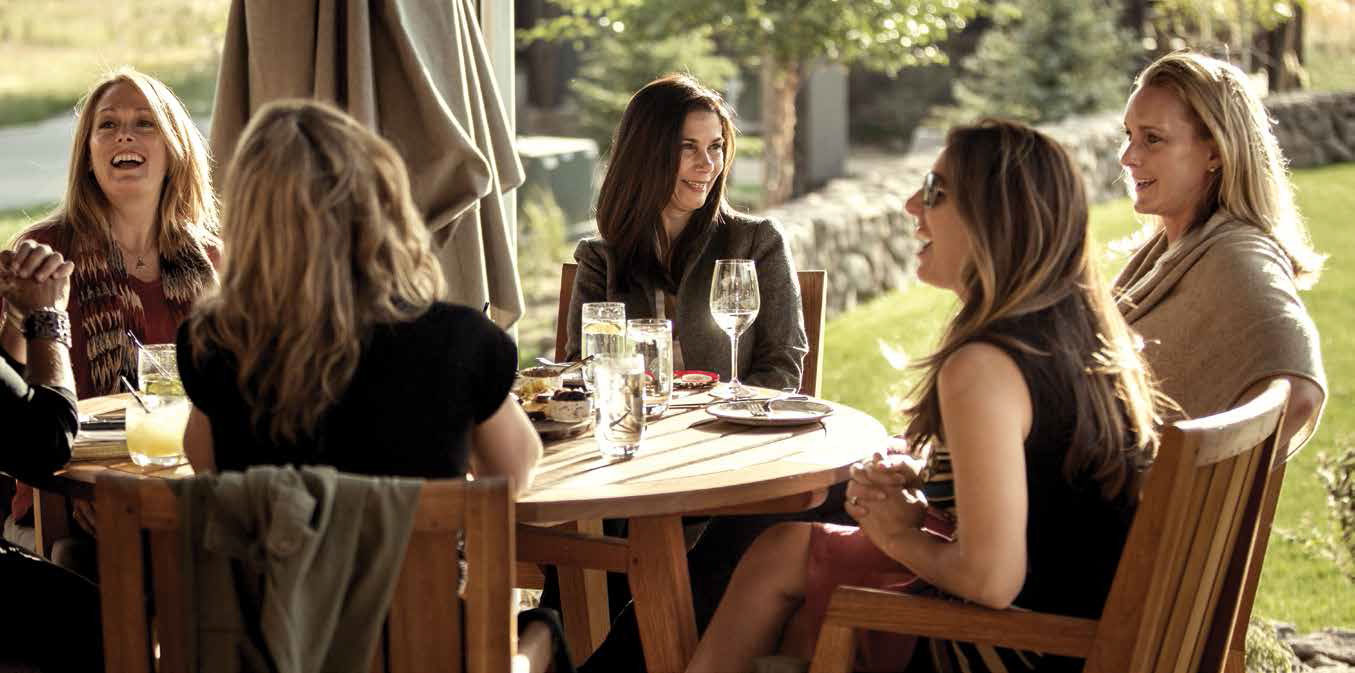MOVING ON UP
PARK CITY REAL ESTATE MARKET IS ON A ROLL
SABINA DANA PLASSE
Park City’s real estate scene is writing a new chapter for the real estate books for the 21st century. With the purchase of Park City Mountain Resort (PCMR) by Vail Company, the combining of the Canyons with PCMR, and One Wasatch, the Park City area is getting noticed. With Vail’s major capital investments into the Park City area, projects that were halted or struggling are now thriving. In 2015, there were significant differences in the overall market compared to 2014. The area’s resorts are flourishing, and real estate agents are reporting positive attitudes from buyers, sellers, and investors, as well as record-breaking numbers for new home construction and real estate sales.
Western Home Journal invited some of Park City’s most active real estate agents to meet at the exquisite Freestone Lodge in Victory Ranch on one of Park City’s perfect fall days to discuss why the future is so bright in Park City, Utah. The discussion included Michelle Eastman, Brigid Flint, and Christine Grenney of Summit Sotheby’s International Realty and Negar Chevre and Siobhan Smith of Berkshire Hathaway. These top-tier agents are valued brokers, working mothers, successful businesswomen, and have all embraced and experienced the challenges and changes of working in the Park City real estate market for quite some time. Find out what these agents have to say and discover a new perspective on Park City’s thriving real estate scene.
With real estate activity in the Greater Park City area for the first half of 2015 generating the highest number of closed sales and the highest total dollar volume since 2007, it would appear that business in Park City is good. What do you think plays into this recovery?
SIOBHAN SMITH: We have a good economy, consumer confidence is up, and lending has loosened up. Park City has evolved into a year-round community with festivals and events going on all the time. And it’s very easy to access this lifestyle—you can land at Salt Lake International Airport and in less than an hour, you’re in Park City enjoying life.

NEGAR CHEVRE: The macro-economic factors influencing national real estate sales are also at play in Park City. The steady pace of job creation, low unemployment rate, the historically low interest rates, and, in particular, the prospect of the Fed increasing rates has encouraged buyers to buy now. Our market is luxury homes and lifestyle buyers. High-net-worth buyers with cash on-hand tend to invest in real estate as a safe haven when there’s volatility in the stock markets. It’s been a great year.
Pending sales in Q2 in the greater Park City Area are up 7.1 percent, which is the highest since 2006. Existing sales volume measured in both the number of transactions and the dollar volume is up 16 percent in Q2 in comparison to 2014. We have a solid market right now. When you add the fact that Park City is consistently ranked as one of the nation’s top 10 ski resort towns, it’s not surprising that our numbers are as strong as they are. In fact, National Geographic just named us one of the top mountain biking towns in the U.S.
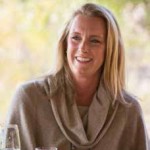
CHRISTINE GRENNEY: Certainly what has happened with the Vail and Park City merger combining to become the biggest resort in the U.S. is having a positive impact. Deer Valley has plans to expand, improve, and enlarge the resort and Deer Valley’s ownership of Solitude will certainly play a part. We have 10 resorts within an hour’s drive and significant capital improvements happening at the ones right in our backyard. There is also the proximity to national destinations that makes travel very easy. And the year-round appeal—which we all have known about for years—has made Park City a destination for any budget whether a luxury or entry-level vacation. Park City is also a friendly town with a wide demographic of ages and levels of interests in many different activities.
MICHELLE EASTMAN: Over the last few years, I’ve definitely noticed that Park City is attracting successful

Flint Eastman / Ski Park City Real Estate Summit Sotheby’s International Realty
younger people. Dot-comers who run tech businesses and hedge fund businesses have created wealth and want the outdoor lifestyle Park City has to offer. We’re seeing a lot of people in their 40s and 50s visiting Park City who end up purchasing real estate, and ultimately, spending most of their time here as full time residents. In 2006, the demographic for Victory Ranch, for instance, was 60-plus in age. Now, it’s younger families who want to spend significant time enjoying the outdoors and breaking away from their busy lives.
BRIGID FLINT: Along the Wasatch Front, we now have tech and software development companies such as Adobe and Intel/ Micron. A Park City home is a viable option for people working in Salt Lake City. As Utah’s economy grows, we’re seeing and feeling the benefit of that in Park City.
CHEVRE: The growth of the Utah tech corridor known as ‘Silicon Slopes’ where Southern Salt Lake County meets Northern Utah County will only benefit Park City real estate as it will attract a higher level of lifestyle buyers looking to enjoy the Park City amenities and its convenient commute to Salt Lake City International Airport.
SMITH: Residents don’t physically have to commute to somewhere like Salt Lake City, Ogden, Provo or as far away as New York City or California. They can telecommute from Park City, which is also contributing to our growing market.

Flint Eastman / Ski Park City Real Estate Summit Sotheby’s International Realty
FLINT: We have some clients who are fully employed in New York City, and they spend their winters in Park City. They wake up early and telecommute as well as flying back once a month to Manhattan. This type of lifestyle and employment is a reality for many homeowners in our market.
With Vail’s major capital improvements around $50 million in prep for this ski season and with the connection of Park City Mountain Resorts with The Canyons, how are these changes impacting real estate sales?
EASTMAN: We’re seeing the biggest change in The Colony market in the past six months, especially with the land sales since this announcement.
CHEVRE: To date, eight lots and eight single-family homes have sold at The Colony in 2015.
EASTMAN: We’re talking $2 million lots with a price increase over the 30 percent in the last 12 months in The Colony.
FLINT: One sale a month average in the last year.
SMITH: The Colony is releasing Phase 4C which is exciting because it’s closer to the Interconnect between The Canyons and Park City Mountain.
CHEVRE: In addition to the solds, six lots just went under contract between $1.8 and $2.8 million at The Colony.
GRENNEY: It’s a staggering statistic when you have an entry-level home that is $6 million in round numbers and lots that are almost $2 million. That’s a healthy contributor to the real estate shift in Park City—it’s exciting and it means there is a lot of money, interest, and commitment.
EASTMAN: There are around 40 homes under construction right now and about 10 are spec homes. We are talking $5 million homes, which indicates a significant shift towards a healthier market.
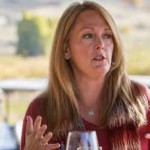
Berkshire Hathaway Home Services Utah Properties
SMITH: The ‘Vail Effect’ does help, and its effects are widespread. For example, Deer Valley has acquired Solitude. We have all these ski resorts less than an hour away from Salt Lake City. If people want to choose Park City and ski The Canyons or Deer Valley, they have benefitted. We don’t know where ‘One Wasatch’ is going, which is another topic. As far as Park City proper and the outlying areas, everyone has been impacted by the ‘Vail Effect.’ There’s a saying, ‘A rising tide floats all boats.’
GRENNEY: It does pose a challenge. The average homebuyer and seller is in that $600,000 to $900,000 range in Park City. Where does that leave people? The question we real estate agents are asking is, ‘Is my home value inflated due to the ‘Vail Effect?’’’ I’ve seen a huge increase in my own neighborhood. I bought there three years ago, and it would certainly be more challenging to buy a home there now. At some point, the growth will fuel expansion in the outlying areas of Park City.
CHEVRE: Christine is right. We have a very segmented market. The ‘Vail Effect’ is going to be felt differently in differently areas. The impact on Jeremy Ranch for example will not be the same as the impact on The Colony or other ski-in/ski-out areas.
FLINT: The epicenter is The Colony, as it should be. It’s the one community that will benefit directly from this combination more than anywhere else. Colony owners will now have access to twice as much terrain to ski from their homes any day of the week, which is incredible.
CHEVRE: I agree. I believe we are going to see a steady growth over the next several years as lifestyle buyers come to town and begin to experience the new Park City Resort and 7,300 skiable acres just 35 minutes from Salt Lake International Airport.
SMITH: With Vail’s marketing and the Epic Pass, we have skiers, snowboarders, and anyone who wants to enjoy the mountain lifestyle discovering Park City for the first time.
FLINT: It’s definitely giving people a more affordable option. You can get an Epic Pass, right now, for $650, while paying $2,000 at Deer Valley for a season pass.
CHEVRE: The Epic Pass is a win-win. It attracts additional visitors and skiers from the Colorado and Lake Tahoe Area. It’s good for the consumer because it forces other resorts to also be competitive and when that happens the consumer benefits.
GRENNEY: PCMR’s new C.O.O. Bill Rock has a vision for the conjoined resorts—a skiing, dining, and shopping experience, which is what we don’t have right now. We have a Main Street environment where everyone convenes for dining and shopping and there really isn’t anything else like that at the resort level apart from your traditional ski shop. I think that’s a vision we will all benefit from whether it’s an après environment or not. The resort is going to want to capture those with an Epic Pass or anyone who is on a ski vacation and offer them something from crack of dawn until they break for lunch and then offer them some great shopping options right there. But the resort will also want to appeal to the skier who is skiing from bell to bell and first to last chair and offer them something too. It will be a huge benefit to all of us once all this comes to life.
How is the commercial market?
EASTMAN: It’s very active. The price per foot on Main Street is soaring right now for commercial leases.
FLINT: There was a recent sale of a Main Street restaurant for $5.5 million. The former owners probably owned it for over 20 years.GRENNEY: The positive is that the interest in commercial won’t be devoted to one teeny-tiny single-lane street. It will be dispersed among the base of these resorts. The Vail Corporation has done all this before and has learned from their process and now will come in and execute what they know works from their experience in Colorado.
SMITH: On Main Street, it’s wonderful for the owners who are benefitting from sales. However, some merchants on Main Street, who are tenants, worry about their leases. I hope Main Street will remain relatively affordable for them in order to maintain the small town flavor.
GRENNEY: The rents on Main Street are inevitably going to go up. No one wants the local culture to change in Park City, but does that mean there can’t be any offshoots in a part of town that previously had nothing of interest? In fact, it makes it more available to locals and visitors.
FLINT: I think that’s Bonanza Park.
GRENNEY: And Prospector too.
CHEVRE: Expanding outside of Main Street, whether it is Bonanza Park, Mayflower, or other areas, provides other options and that is positive for the Park City experience.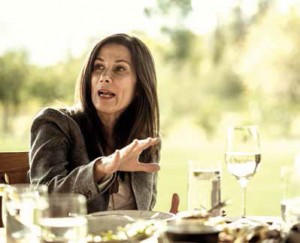
Where are the hot ticket areas right now?
GRENNEY: Statistically, certainly Old Town is one.
CHEVRE: I want to look at this question a little differently. I think hot ticket areas go hand-in-hand with hot ticket trends. The hot ticket trend in the Park City area right now is what we refer to as mountain modern architecture. There’s a huge demand for it and the supply to date has been limited. If you look at Enclave at Sun Canyon, for example, their success can be attributed to the combination of the clean lines of the contemporary architecture, built to intrinsically blend with its natural surroundings and the warmth derived from the use of materials such as stone and wood. Their design philosophy mimics Frank Lloyd Wright’s philosophy that homes should be of the mountain not on the mountain and is a very attractive value proposition to lifestyle buyers. Whether it’s ski-in/ski-out homes or new construction in the middle of town, developers who have paid attention to this trend have benefitted. The Stein Erickson project, where 40 units (10 residences and 30 townhomes) have been put under contract this year, is another great example.
SMITH: We had buyers who were absolutely set on buying and living in Old Town so they could walk to work near Main Street. Old Town is historic, fun, and eclectic. Some homes have modern floor plans but they usually cost a lot more than something that’s older, challenged, or vertical. You know, a ‘Stairmaster Estate.’ After two months of looking they were discouraged by price, limited space and fell in love with High Star Ranch in Kamas. They bought a home, which is contemporary, new, and with views on a lake. Many people are starting to grasp the idea that 20 to 25 minutes away from the pulse of Park City is not so far away. The same goes for the Heber Valley.
GRENNEY: Particularly if you are coming to Park City from a region of the country where the average one-way commute is over an hour. It only took me 23 minutes to get to the clubhouse at Victory Ranch.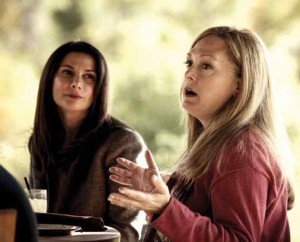
The Canyons area offers over 5 million square feet of development rights while there are just under $700,000 in the Park City area. Is there a fear that Canyons Village could end up as developed as Vail Village?
FLINT: It will be developed. It’s been in the plans much longer than Vail Company has been around Park City. Those entitlements have been very long-standing.
GRENNEY: This is not popping up by accident. Huge parcels are already owned. These entitlements have been there for decades. We would not have the infrastructure, the services we have in Park City, or the four best elementary schools in the state if we didn’t have the property tax revenue from planned development.
SMITH: Our property taxes, even for second homeowners, are not that bad compared to other states.
CHEVRE: A significant portion of the 5 million square feet you are referring to is mid-mountain and the resort. Let’s also remember that the Canyons Village and the areas being developed are tucked away and not located in the highly trafficked areas in Park City. Density will increase but not enough to have a negative impact.
SMITH: The idea was to make The Canyons a pedestrian village like Beaver Creek—a place where family members could walk around freely without worrying about cars and traffic.
What are local governments doing to protect the character and nature of these communities?
What do representatives of Vail Resorts say about their intent with The Canyons?
CHEVRE: I think Vail Corporation has been very transparent about what they are going to do and so far have done everything they said they were going to do.
SMITH: What’s the alternative? You have other businesses in addition to Vail bringing their companies and employees to Park City. With growth there can be good and bad, the trick is trying to balance everything. Vail is a business and they understand that in order to succeed they have to provide a positive ski experience while keeping Park City, Park City.
CHEVRE: Vail’s intent has always been to focus on the operations on the mountain and make the ski experience a superior one for the consumer. We have a very engaged and active community that is clearly involved in what’s going on. As long as there’s dialogue and we remain involved we will be able to influence the outcome. I’m optimistic.
FLINT: Vail has come in and done this in many resort markets prior to Park City. The difference for them coming into Park City is previously they have come in and rescued ski resorts that are now on the Epic Pass. Coming into Park City, they recognize this is a very strong economy and there’s a lot of character. They will benefit in the long run from that Park City character. Park City benefits from Vail, but does not need Vail, as did some of the other ski resort economies. It’s important as a community to exercise our needs with Vail. If we don’t ask for them, we won’t get them. We will have traffic issues and we need to continue to work with them on issues. We need to continue to stay in their face as a community.
CHEVRE: Park City council members have already starting thinking long-term and tossed around ideas such as electric buses, monorails, toll roads, satellite parking, and trams.
SMITH: Our community has an amazing free bus system. In addition, we have bike lanes and more and more sidewalks. This summer there were lots of infrastructure improvements. Plus, the city planning department is back on track having just named a new director. As we continue to grow, smart planning is really the key.
GRENNEY: Of course, there are growing pains, and we have to have faith in our elected officials. Generally speaking, Park City is a sophisticated community. The people here are very involved and aware.
What is your take on One Wasatch and the way that will impact the Park City market and the Park City lifestyle?
EASTMAN: One Wasatch is more the ‘Mountain Accord.’ One Wasatch was put on the back burner because the Mountain Accord will address some of the environmental issues that will impact the Park City area in the next two years. We have taken the first step in that two of the resorts are connected. People are afraid of what will happen to backcountry skiing and the watershed. We have to be cognizant of that and the Mountain Accord will start to look at these issues and how we keep the ski areas for generations for to come and make room for new visitors. I think One Wasatch will happen, and it’s a great thing for Park City. There isn’t a whole lot of development area in Big and Little Cottonwood Canyon, which means more business in Park City.
SMITH: It’s an ongoing discussion which is good because if we’re going to do this it’s got to be done right.
GRENNEY: One Wasatch involves a lot of people who are not in Park City. One Wasatch is not about Park City. It’s about three linkings, and one of them has already been achieved with Park City and The Canyons. Truthfully, the possible connection between Park City and Deer Valley has been there for years; it’s a single rope that someone needs to pull, which is a decision for the executives of Deer Valley about what makes the most sense for their resort. Deer Valley does not make hasty decisions, and it’s why they are repeatedly one of the top ski resorts in the country. One link, which is through Grizzly Gulch to connect Solitude to Snowbird and Alta, crosses over private lands. There are a lot of passionate Utah folks—who are both in Park City and outside of Park City—and these connections involve altering their backcountry, U.S. Forest Service lands, making private lands public and affecting the watershed. People in Utah take these topics very seriously. Park City can share in the voice, but it might be tough to determine.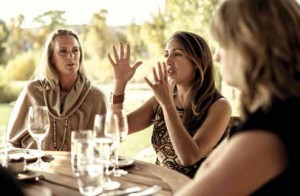
Are there still deals to be found in Park City?
EASTMAN: There are a few spots.
SMITH: People buying in the outskirts while prices are still affordable.
CHEVRE: Some people still come to Park City looking for deals, but very few buyers are still under the impression that there are huge deals to be had. Park City is a lifestyle and destination market. Our buyers are mainly second and third homebuyers. We are less about CAP rates and immediate return on investment and more about amenities, convenience, and lifestyle.
EASTMAN: Yes, that and we get the super analytical.
GRENNEY: Those are the ones who have to have an ROI and your spreadsheet has to pencil at the end of the day.
EASTMAN: Yes, but what I hope for places like Kamas is that they stay a quaint little town.
GRENNEY: People riding their horses down Main Street—it’s legit. When can you take your kids to the Fourth of July Oakley rodeo, and it’s bucking broncos, mutton busting, you can buy your children authentic cowgirl hats, and it’s only 20 minutes from your house.
SMITH: Everyone in Park City really does get along and we really don’t want to see that change. That’s why we’re here.
GRENNEY: There are amazing things happening in our community. I have a different perspective on deals. I sold 21 properties under $500,000 this year, some as low as $120,000. So, it depends on what your perception of what a deal might be. If you are looking for an investment it satisfies your spreadsheet as well as serves as a safe haven for when the market is going up and down. Truthfully, I have looked at these places too for myself. I think there are still deals, but it takes very involved, very watchful, and very connected real estate agents to find them.
EASTMAN: In my recent experience, when there’s a deal the seller pulled the property from the market after receiving a full-priced offer. It’s been a frustrating experience. I agree with Christine you need well-connected agents who hear about the deals before they hit the market.
GRENNEY: You must buckle your seatbelt for a deal. Your buyer has to be ready, cash, or pre-approval in hand.
It seems like the spec market is booming right now.
What are the keys to buying / selling a spec home?
What are buyers looking for?
EASTMAN: It’s booming.
CHEVRE: Finding a reputable architect and builder is key. It’s also about making sure you have a relevant product and understanding what the buyers want. You need to keep a balance and stay away from fads.
EASTMAN: We have an amazing spec in The Colony. People want craftsman style and timeless. Natural and warmth and the pendulum has swung too far over towards the modern.
SMITH: Speculative building and investing depends on your goals. We believe the days of easy flipping are over. Investors need to watch their budgets and make sure they are not overpaying for the development dirt and house while still appealing to the potential buyer at market prices.
EASTMAN: It should be the Frank Lloyd Wright philosophy—homes should be of the mountain, not on the mountain.
What are some other draws to Park City?
EASTMAN: People come in the summer and don’t know it’s a summer town, and they love it.
CHEVRE: And fall is heaven in Park City. We’re really a four-season town.
GRENNEY: You can see your local flavor act for free at Deer Valley Resort in the summer, and all winter you have national and international names live. This town draws big-time artists, and there’s live free music almost every night of the summer. Entertainers are eager to have Park City as a stop on their tour calendars.
SMITH: Sundance has put us on the map but it can be both a blessing and a curse. If you own, it’s the best time to go skiing or boarding because the Sun Dancers aren’t on the mountain—they’re screening films. That said, I recall one year where I took in a film at eight in the morning but was on the slopes by noon. You can have it all.
FLINT: Sundance also gives people great rental revenue potential.
GRENNEY: There’s no longer a shoulder season here. Park City is a year-round community, and it’s as good as it gets.
